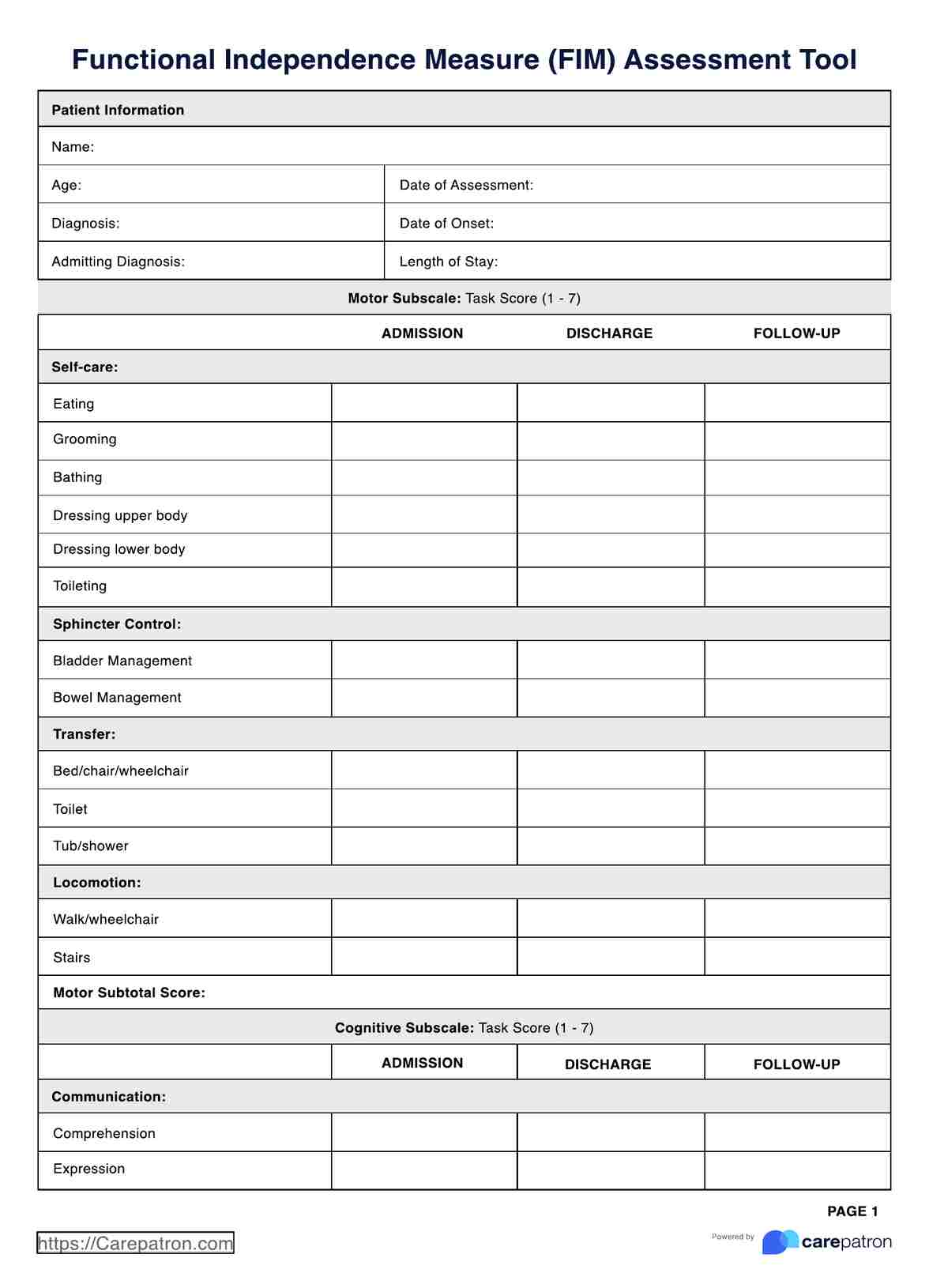The FIM is administered by observing a patient's performance of the 18 specific tasks (in areas like self-care, transfers, and cognition) during their daily activities, or by interviewing the patient or a knowledgeable caregiver. For each task, the patient's performance is scored on a 7-point ordinal scale ranging from 1 (Total Assistance) to 7 (Complete Independence), based on the amount of assistance required from another person and/or the time needed to complete the task. These individual scores are summed to yield a total score, typically done upon admission to and discharge from a rehabilitation unit, and are recorded by trained healthcare professionals, often therapists or nurses, following standardized rules.

Functional Independence Measure
Learn more about the Functional Independence Measure (FIM) to evaluate a patient's level of independence and plan for their care.
Functional Independence Measure Template
Commonly asked questions
A low total FIM score (closer to the minimum of 18) indicates a high level of disability and maximum dependence on others for performing Activities of Daily Living (ADLs) and cognitive tasks. Specifically, scores in the lower range (1-5 on the individual item scale) mean the patient requires moderate to total assistance from another person, often necessitating significant physical help, cueing, or supervision, which correlates with a need for intensive care, longer rehabilitation stays, and greater long-term support upon discharge.
While there is no strict, legally mandated upper age limit, the Functional Independence Measure (FIM) is primarily designed for and validated in the adult population, generally aged 18 and older, receiving medical rehabilitation. For children, the WeeFIM (Functional Independence Measure for Children) is the parallel and more appropriate version, as it is scaled to account for normal developmental stages. Although it is mainly used for adults, its application is based on a patient's rehabilitation needs and not strictly on their age.
EHR and practice management software
Get started for free
*No credit card required
Free
$0/usd
Unlimited clients
Telehealth
1GB of storage
Client portal text
Automated billing and online payments











